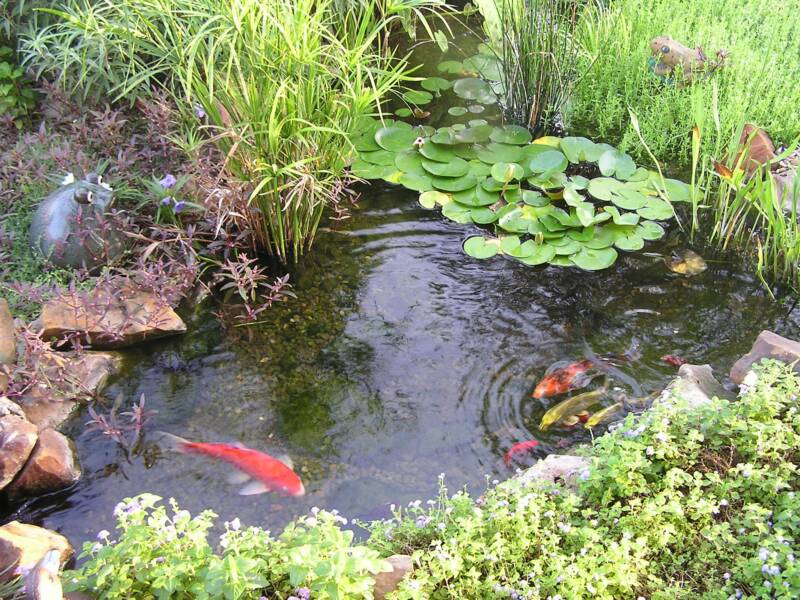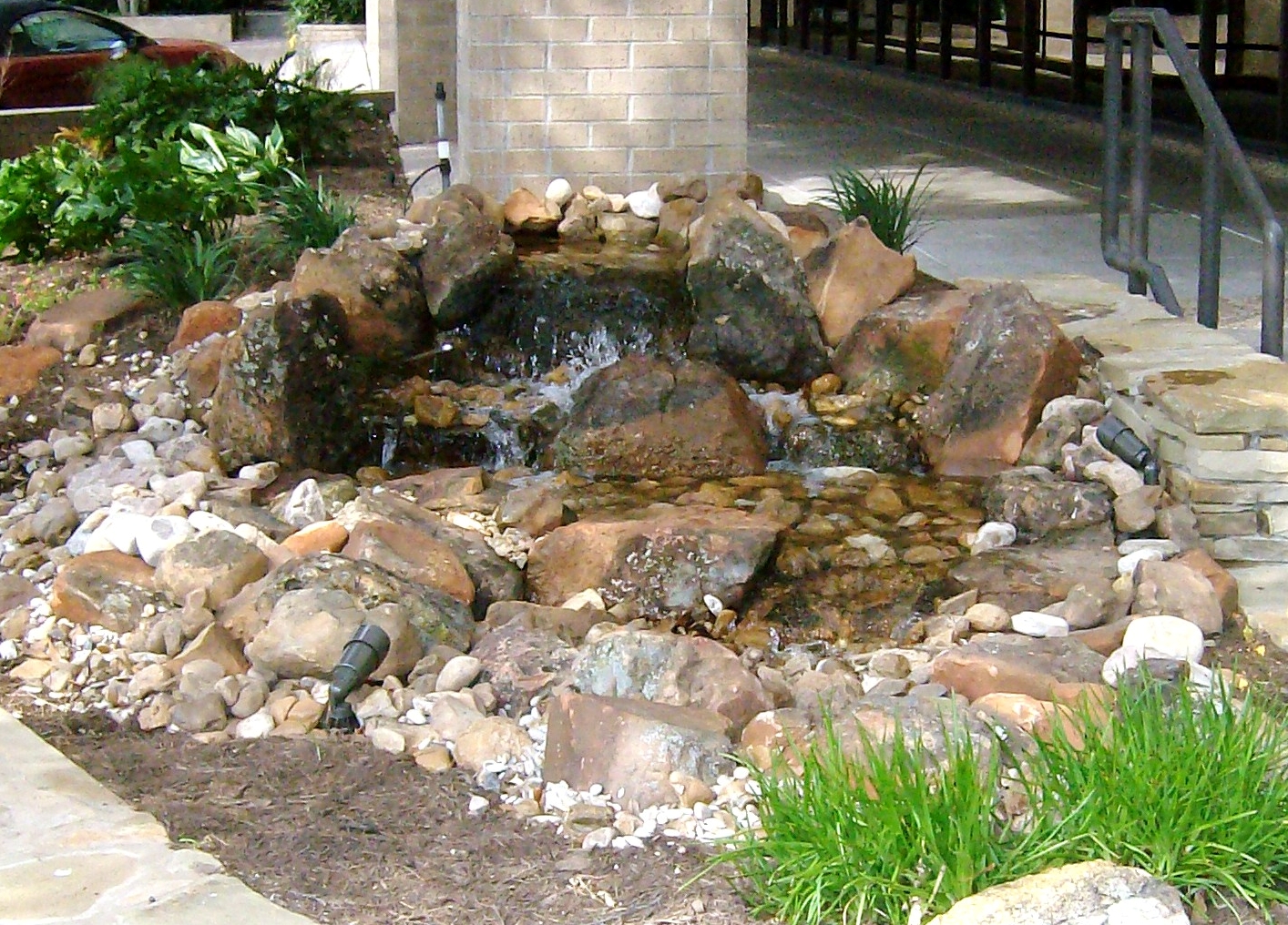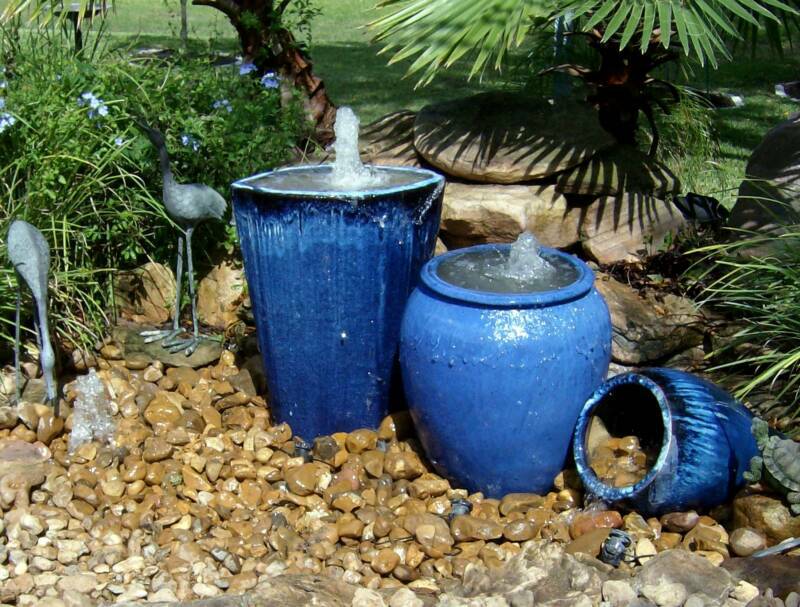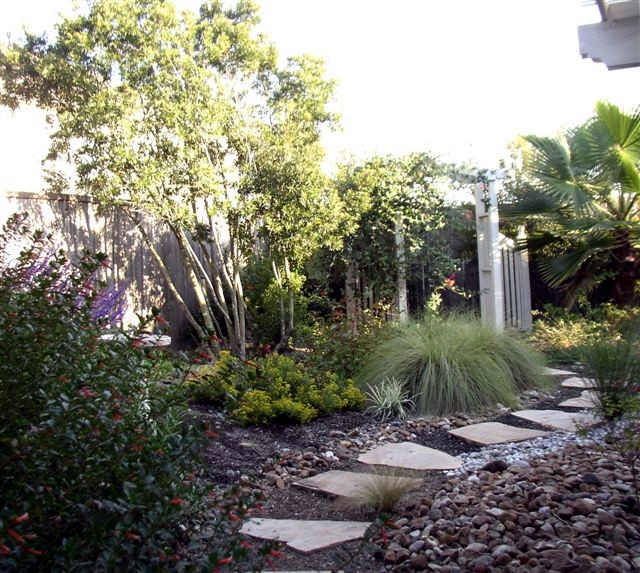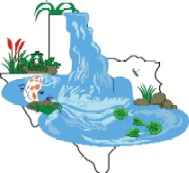


Rainwater Harvesting
Organic Ecosystem Ponds
Pondless Waterfalls
Urn and Fountain Features
Water-Wise Landscapes
Meet Your Water Feature Professionals


Texas Ponds and
Water Features
Container Water Gardening
by Matt Boring
The Natural Water Gardener
If you’re a regular reader of the Dirt Doctor’s magazine, you’ve probably read one or two of my articles about the organic, holistic, and chemical free way to enjoy water gardening. Creating a balanced aquatic ecosystem in your pond means that you’re not trying to undermine natural processes that take place in the water garden, but instead allowing nature to take its course and find its own balance. When you work with nature instead of against her, she will gladly do most of the work for you. This leaves you more time to relax beside your pond instead of working in it. And isn’t that why people add water gardens to their lives– to have a beautiful place to relax? I’ve never had a single customer who wanted a pond so that they could learn aquatic chemistry and come home each day after work to check pH levels and other such details.
The soothing sound of moving water soothes the nerves and helps melt away the stress brought home from the normal workday. As you watch the gently moving surface ripple and shimmer in the sun, the effect can be almost hypnotic. In the afternoon, the reflected movement from my pond’s surface shines through the kitchen windows to create a flickering pattern on the ceiling of my living room. At night with the underwater lights on, the water’s movement is transferred to the surrounding trees and landscape making the entire place seem surreal. I have one customer who has a sunroom attached to the back of her house. At night her husband can lean back in his recliner in the living room and watch his fish cavorting in the reflection on the ceiling of his sunroom!
But what about people who don’t have the space for a water garden at their home? Apartment managers would be upset if you dug a pond on their property no matter how nice it may look. I bet they’d keep your deposit too! And what about people who don’t have the money for a professionally-built water garden or those who don’t want to jump head-first into this new and exciting hobby, but would like to dip their toes in the water, so to speak? For all these situations and perhaps others I haven’t mentioned, a container water garden may be just the ticket to get people started toward the wonderful world of water gardening.
‘What is a container water garden,’ you might ask? Very simply, it’s some sort of container that fits into the area you want to put it and contains water a few aquatic plants, and a fish or two. Everything else about it is up to the individual who’s creating the garden. Some people may not want to have a pump and are content to just watch nature set up shop in this new area. Underwater lights are an option that most people will probably pass up in a container water garden, but the choice is up to the individual water gardener. Fish help balance the aquatic ecosystem, but one or two is all you’ll want in the smallest situations so as not to overburden the tiny ecosystem that you’ll be helping to create.
Basically, you’ll start with a container that looks good to you and fits in the space you want to use. Some people use half of a ‘whiskey barrel’. There are specially-made liners that fit snugly into a whiskey barrels to ease its transition into a container water garden. Other people will use Rubbermaid containers of some sort. I’ve seen many different ideas utilized by creative water gardeners from animal watering troughs to old ‘footed’ porcelain bath tubs. Really, anything will do as long as you like it in the space where you’re going to put it and it holds a couple of feet or so of water.
Once you’ve decided on a container to use, go ahead and fill it with water— not all the way to the tippy-top, but within a few inches. An old bathtub may already have an overflow hole in it so you can fill it up to there. Since most container gardens won’t use any man-made filtration, it’s a good idea to line the bottom with an inch or so of gravel to give the beneficial bacteria some place to colonize in your water garden. This also provides a place for underwater oxygenating plants to root.
Now comes your first big decision and that is ‘do I want an electrical pump to circulate the water?’ With a pump in the system, you’ll know that the water is getting circulated well and that there shouldn’t be stagnant pockets of water where too much of the bad bacteria can grow and upset the balance of your little system. You will also be able to enjoy the sights and sounds of moving water. You could use the little fountains you see at the hardware stores. I’ve seen some whiskey barrels that had what appears to be an old hand-operated water pump attached to the edge. The water flows out of the spout like someone was constantly pumping the handle. If you’re using an old bathtub as your container, you may want to rig it where the water flows in via the faucet. Whatever option you choose, a pump in the system helps circulate the water and adds oxygen that’s crucial for the beneficial bacteria to thrive, to the system.
I prefer a pump in these systems, but with a little trial and patience, you can find a balance in your water garden that will work without one. The important thing to remember if you’re not using a pump is to provide enough underwater oxygenating plants to allow the fish and bacteria to live as they should. The size of the container pretty much determines how many fish you can safely put in it. In a small container such as the whiskey barrel, start with one fish until the system is established and balanced and then you may want to add a couple more, but add them one at a time so that the system can catch up. Goldfish are fine in situations like this. You don’t want to put a 10"-long Koi into a tiny barrel.
Go to a local water gardening retailer and find a lily you like. Mature water lilies come in different sizes and you’ll want to check with a knowledgeable salesperson to make sure you’re getting one of the small ones. You don’t want it to cover the entire surface of the container you’re using. Select an underwater oxygenator like ‘Hornwort’ and perhaps something that roots in the bottom and floats on the top like ‘Parrot’s Feather’. Underwater ‘grasses’ can also be interesting in a container garden. Once you get them home, pull the gravel back from part of your container and place the water lily in the bottom in its pot. Spread the gravel back out to cover the container’s bottom to about an inch or so. Take the other plants out of their pots and rinse off their root systems. Plant them directly into the gravel substrate. You can do all this before you fill it up with water if you wish. After it’s all planted and the water is in, it’s a good idea to add some water conditioner before you add any fish to remove or neutralize any chlorine, chloramines, and ammonia in the water. Float your fish in bags in the water to equalize the temperatures before releasing them into the new water garden.
Once all that’s done, you’re ready to enjoy this tiny slice of an aquatic paradise right on your porch or patio or apartment balcony. Give it some time to find a balance and add a little beneficial bacteria to help get the ecosystem started. In these conditions I recommend liquid bacteria rather than dry because the liquid works faster. You can add an underwater light or two if you want to extend your hours of enjoyment and see what your fish are up to at night.
This is a great way to sample the pond owner’s lifestyle on a small scale. Many people will catch the ponding bug from this experience and will look forward to the time they have enough space to build a real pond in their own backyard. Remember, a larger water garden is easier to keep in balance than a small one, but with a little patience and experimentation, you’ll find the perfect balance in your little system. Good luck on your container water garden and...........
Happy Pondering!

